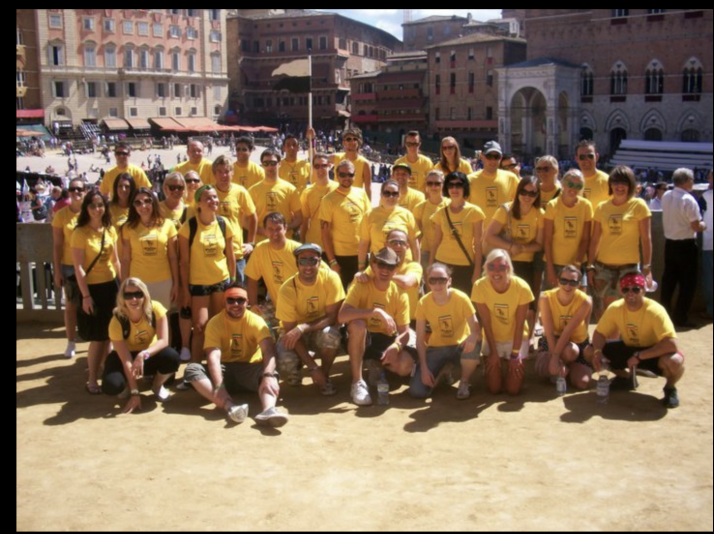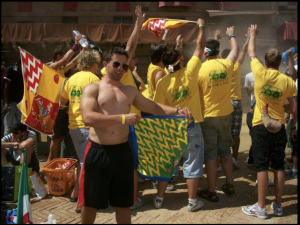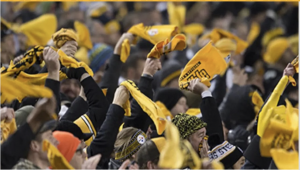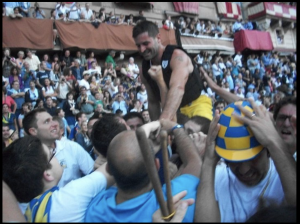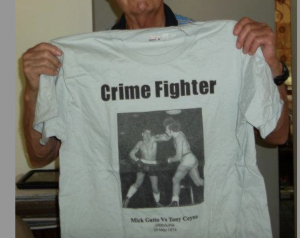“Lord protect me from my friends, I can take care of my enemies”
– Voltaire.
In 2010, my life sounded like a country song.
In rapid succession, I was both fired from my job and dumped by the girl I was seeing.
If I had a dog, I’m sure it would’ve died shortly thereafter.
The firing was well deserved, and if I’m being honest, a relief. But the girl thing stung until I met my wife three years later.
Ironically, for both job and love interest, the positions were filled by each of my best friends. Which was a mindfuck initially, but today I realize these things happen to the best of us.
Hindsight twenty-twenty two, seeking fulfillment though extrinsic sources (i.e. the ladies, work..etc) only wrought heart ache and frustration.
My misery was internally generated. It stemmed from a lack of creative outlet. What Pressfield calls The Resistance.
At my Dad’s encouragement, I bought a one way ticket to Europe and ephemerally, at least, everything turned around when I started writing about my travels.
Whether it was running with the bulls in Pamplona, blacking out in Prague or getting arrested in Thailand, the process of detailing my adventures still brings me a real joy.
With that in mind, let me tell you a story from 2010 I haven’t told.
A story about The World’s Most Treacherous Horse Race.
Ill Palio di Siena.
*******
It should come as no surprise to you, my dear reader, that the World’s Most Treacherous Horse Race, Ill Palio di Siena, takes place in the birthplace of treachery, the cradle of Machiavellian scheming, as it were:
Tuscany.
Twice a year, on July 2nd and August 16, the masses descend on Siena, Italy to witness the most confusing and unnatural 75 seconds of Italian fury since I lost my virginity.
10 of Siena’s 17 Contrada’s (subdivision’s of Italian cities), are pitted against each other in an all-out, balls to the wall, bareback horse race around the Piazza del Campo. The first horse to complete three laps, wins, with a jockey or without.
According to Wikipedia:
The Palio differs from “normal” horse races in that part of the game is for the wards to prevent rival contrade from winning. When a contrada fails to win, its historical enemy will celebrate that fact nearly as merrily as a victory of its own, regardless of whether adversarial interference was a deciding factor. Few things are forbidden to the jockeys during the race; for instance, they can pull or shove their fellows, hit the horses and each other, or try to hamper other horses at the start.
Corruption (bribery) is commonplace, prompting the residents of each contrada, known as contradaioli, to keep a close watch on their stable and their rider to protect them from poisoning, coercion…etc
The winner is awarded a banner of painted silk, or palio, which is hand-painted by a different artist for each race. The enthusiasm after the victory, however, is so extreme that the ceremony of attribution of the Palio is quite instantaneous, being the first moment of a months-long celebration for the winning ward. There are occasional outbreaks of violence between partisans of rival contrade.
The Palio di Siena is more than a simple horse race. It is the culmination of ongoing rivalry and competition between the contrade. The lead-up and the day of the race are invested with passion and pride. Formal and informal rituals take place as the day proceeds, with each contrada navigating a strategy of horsemanship, alliances and animosities. There are the final clandestine meetings among the heads of the contrade and then between them and the jockeys. There is the two-hour pageant called Corteo Storico, and then all this is crowned by the race, which takes only about 75 seconds to complete. Although there is great public spectacle, the passions displayed are still very real.
Well, if that isn’t a metaphor for the Cherry Business, I don’t know what is.
When goal isn’t to win, but to watch your enemy lose, my Italian soul stirs.
I know I’ll never be a real Linden-Italian, but my love for Italian scheming and undermining is well documented.
That ‘Love’ explains how I’ve survived so long as a mere half breed in the Cherry Game.
***
For good or for ill, animal rights activists have yet to ruin the fun at Ill Palio di Siena.
Like American Rodeo or The Running of the Bulls, whatever ‘animal cruelty’ that occurs is conveniently rationalized under the same banner Southerners justify flying the Confederate Flag:
“It’s tradition!”
One crazy tradition of Ill Palio di Siena is that the race is bareback.
Which is literally and figuratively, nuts. Riding a horse bareback, at speed, isn’t the best idea, unless you’ve already sired male heirs to continue your family name.
That said, the craziest thing about Ill Palio di Siena is that it started in the 1500’s as a wild buffalo race.
Yes, you read that right.
These pyscho Tuscan’s raced wild buffaloes for 100 years, before having the thought-provoking insight that domesticated horses might serve as a safer alternative.
I imagine many Italians were gored before coming to that inevitable conclusion….
“Where there is only a choice between cowardice and violence, I would advise violence.”
-Ghandi
Of the thousands in attendance, only a small percentage actually see the race. Most are buried in the infield, where the only way to see the race is to be over six feet tall, sit on someone’s shoulders or jockey for position along the railing.
Fortunately, I attended the race with a group of seasoned Palio veterans known as ‘The Fanatics.’
We arrived five hours early to an empty Piazza and staked our claim for prime, free viewing along the finish line.
Three hours before the race, the Sienan’s closed the infield. No one was allowed in or out.
This forced our Fanatics to perform feats of bladder control or fill up Gatorade bottles under cover of their chosen Contrada’s flag. Not that I would know about that or anything.
Each Contrada is represented by an animal or force of nature.
They are, in no particular order:
- Aquila (Eagle)
- Bruco (Caterpillar)
- Chioccala(Snail)
- Civetta (Little Owl)
- Drago (Dragon)
- Giraffa (Giraffe)
- Istrice (Crested Porcupine)
- Leocorno (Unicorn)
- Lupa (She-wolf)
- Nicchio (Seashell)
- Oca (Goose)
- Onda (Wave)
- Pantera (Panther)
- Selva (Forest)
- Tartuca (Tortoise)
- Torre (Tower)
- Valdimonte (Valley of the Ram)
I chose to represent the Snail Contrada.
I’m slow, come out of my shell only if absolutely necessary and die if I have too much salt.
The Contrada’s flags have their respective animal or force of nature depicted in ornate patterns on thin pieces of silk. The silk flags double’s as scarves, kerchiefs, bandana’s or are hoisted in the air ala ‘the terrible towel’.
Two hours of pageantry preceded the race. It was called ‘Corteo Storico,’ and it seriously tried our patience.
Enduring Corteo Storico was like being stuck in hot church during a never-ending Catholic Wedding. There was no shade and we were forced to drink massive amounts water without a toilet within striking distance. This put us in the unenviable state of being dehydrated while having to pee.
Finally, after hours of waiting, the horses and riders lined up, and after a few false starts, they were off.
If you want me to save you the cost of airfare and room and board, but want to feel what it’s like to attend Ill Palio di Siena, watch the opening scene of Quantum of Solace.
Outside of being there in person, James Bond does the best job of capturing the frenetic scene.
*****
Though we were close to the finish line, I only caught glimpses of the actual race. From my vantage point (I’m 5’4) the race was unremarkable.
All I could see was that Wave Contrada won. This was apropos because a Wave of triumphant Contradaioli’s descended on the winning jockey and horse.
Caught up in the thrill of victory, the Wave Contradaioli’s started trampling a handful of small local children.
A few of our brave Australian Fanatics took notice and came to the rescue.
When The Fanatics decided to stem the tide of stampeding Italians, they knew yelling or reason wouldn’t work.
Violence isn’t a solution, but is an option. And that day, The Fanatic’s violence was a sight to behold.
Five or six of the Wave Contradaioli’s were separated from their consciousness by way of Australian fist before subduing their frenzied celebration. It was the finest display of Australian on Italian crime since Tony Coyne boxed up Mick Gatto.
Of course, you must be asking yourself, “What were the children doing there in the first place?”
Alas! You’ve made a capital error. To introduce logic into an Italian Equation is a mistake of the highest order.
I know this because I am Italian. Our questionable decision-making processes are matters of nature, not nurture. They are inborn, as it were.
But bringing children to brewing civil unrest isn’t just an Italian thing.
Remember: Kyle Rittenhouse’s mom brought a 17-year-old boy with a loaded AR-15 to a potential riot in Kenosha.
Porra.
If Kenosha or Ill Palio teaches us anything, it’s that the madness of crowds is a very real thing.
This is the main thrust of my lesson learned at The World’s Most Treacherous Horse Race:
“….The race is not to the swift, nor the battle to the strong, but to those who can see the danger coming and jump aside, like a frog evading a shillelagh in a midnight marsh.
-Hunter S. Thompson, Rum Diary

